photo from the Amara Enyia facebook page
On December 13th, 2018 Scapi Magazine sat down at Harold Washington Library with Chicago 2019 mayoral candidate Amara Enyia to hear about her second time running. Enyia discusses her efforts to collaborate with and uplift Chicago’s underserved neighborhoods and small businesses, and her creative vision for a cooperative economy and reformed investment practices.
“The first time was like the ‘Lord of the Rings,’” said Enyia when asked about her 2015 campaign. “It was this band of misfits and we had to get this ring to Mordor. We did not know what the journey was going to be like, but we were just so committed.”
Like her first, Enyia’s 2019 campaign lacks the advantages often enjoyed by Chicago mayoral candidates. While Enyia does not have “millions of dollars in the bank” or “40 years of political favors” to use, she and her team beat the odds with enthusiasm that can only come from true belief in Enyia’s ideas.
“Because we know the advantages we don’t have, we had to lean on our own creativity and work ethic, and I think that’s allowed us to be where we are.”
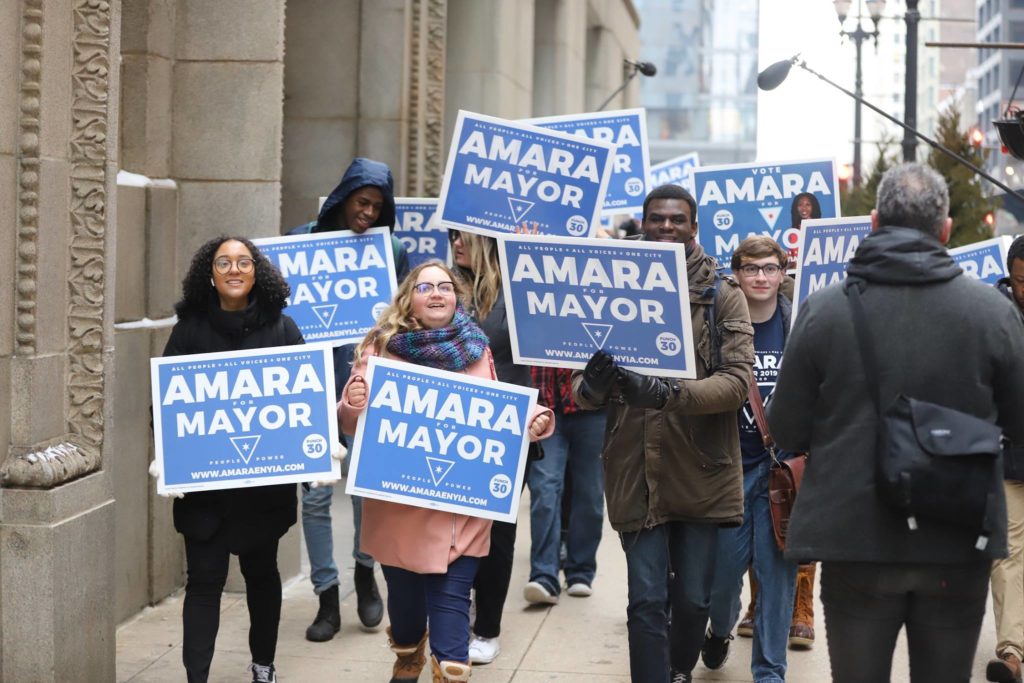
Enyia began her campaign true to her grassroots organizing experience, running through neighborhoods for signatures. After making the ballot by collecting more signatures than any of her fellow candidates, Enyia continues not only to engage with Chicago’s various neighborhoods, but to uplift them. She has identified local businesses as “Amara Power Hubs,” where people are encouraged to come together and advocate for change in Chicago.
“We love the idea because it reflects what small businesses are for: their communities. They are hubs, they’re places where people gather with each other, where you talk and debate,” said Enyia.
It is Enyia’s experiences in organizing and protesting, Chicago government jobs, and in policy work for economic development, housing, food security, and education, that motivated her to run.
“There were always these questions that I had just based upon my own observations in day-to-day life,” said Enyia. “I always give the example of driving on Madison from downtown to Austin Boulevard. And you essentially see the full spectrum of the city and the disparity in terms of the life of someone living five miles west of downtown and the life of someone living downtown on that same street.”
While the city’s infrastructure may benefit residents on Chicago’s wealthier ends, it is not sustainable for Chicago’s South and West neighborhoods. Enyia cited that residents on Chicago’s West side are expected to live 16 to 20 years fewer than those on the East side.
“And so it was that sense of urgency, and just a sense of responsibility that I was raised with, that when we see things that are wrong we have a responsibility to act. That was what drove me the first time and the second time,” said Enyia.
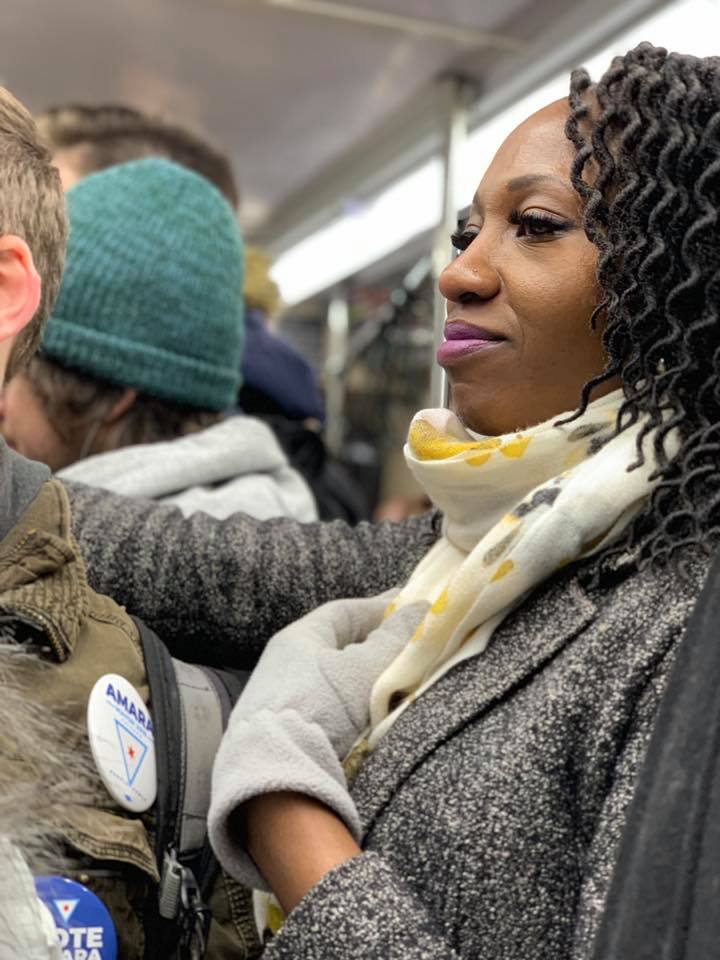
Enyia believes that creativity and the courage to reject and rebuild the status quo are essential for sustainability in Chicago, especially economically. She advocates for a cooperative economy, which involves democratic models to empower residents to have ownership over production, housing, and land.
For example, Enyia provided that worker-owned business cooperatives where employees can choose their salaries, paid sick leaves, and vacations can build both community and family wealth.
“We have this allegiance to status quo that prevents us from really thinking outside the box and moving forward in our thinking,” said Enyia.
Housing co-ops are another characteristic of an economy made to empower workers, as they help protect underserved areas from relocation due to gentrification. Similarly, land trusts can maintain affordability of land and housing.
In her argument for economic and workplace reform, Enyia specifically mentioned the Acero Charter School strike and the hotel strikes:
“The fact that hotel workers have to strike for healthcare because they get laid off over the holidays, as if you magically don’t get sick over the holidays…and I understand the financial cost to the hotels themselves…however, it is a basic need that people have, and that you have to strike for it is very telling,” said Enyia.
Another economic focus of Enyia’s is to reform public policy to set proper examples for the private business sector, which many leftists are tempted to completely disengage from.
“When the private sector does not see the city investing in certain areas, well, that’s where they take their cues,” Enyia said.
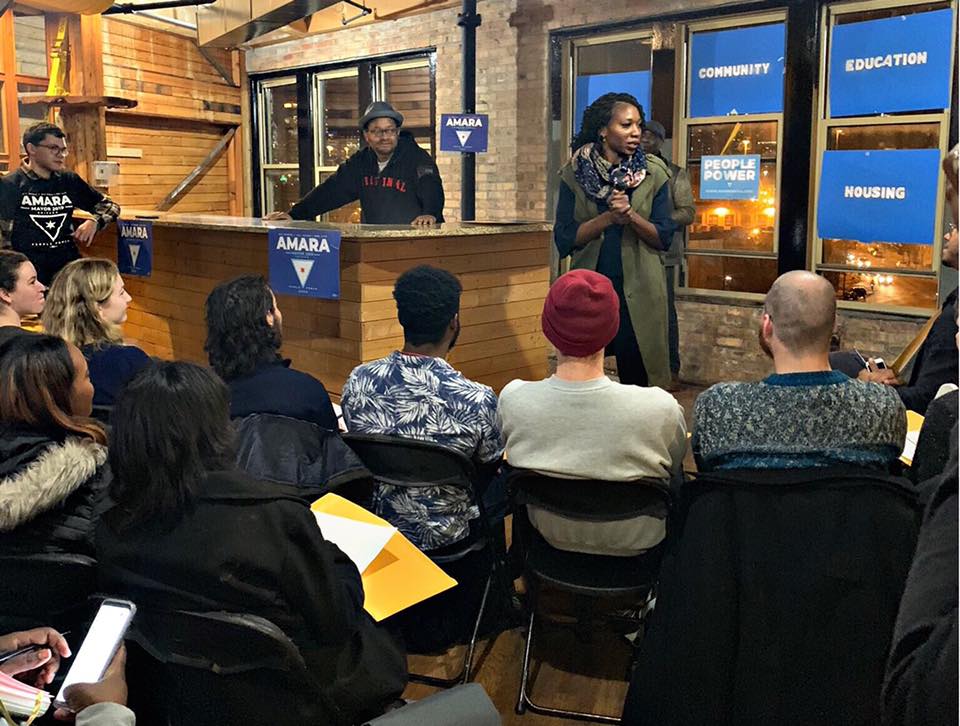
The message Chicago needs to send to big box retailers is that it has an allegiance to the best interest of its residents, because, when making decisions, big business does not consider their effect on residents. As a solution, Enyia hopes to instate more government protections against the private business sector.
Some of Enyia’s policy ideas include checking in with small businesses to make sure they have the support to sustain themselves with or without the presence of the big box retailer, before approving their arrival.
“Because those are the roots, the foundations of our neighborhoods. It’s the small business owners,” said Enyia.
Enyia also talked about improving the way Chicago invests its public tax dollars by holding the private sector accountable for their promises. If a company says they will provide 10,000 jobs by opening up a new location, they should fulfill their promises or have to give the money back to the city.
Enyia also mentioned Chicago’s misuse of tax increment financing (TIF) districts.
TIF dollars are generated by drawing specific city areas whose extra tax revenue is invested back into the same area’s economy and development projects. Originally, TIF districts were intended to be drawn in blighted areas.
“The definition of blight apparently includes Navy Pier, it includes South Loop, and a new DePaul stadium. It includes Mariano’s pretty much everywhere in the city,” said Enyia.
Enyia points out that it is common practice in Chicago to create new TIFs for well-to-do areas like Lincoln Yards on Chicago’s North side, but rarely does the government port TIFs to challenged areas.
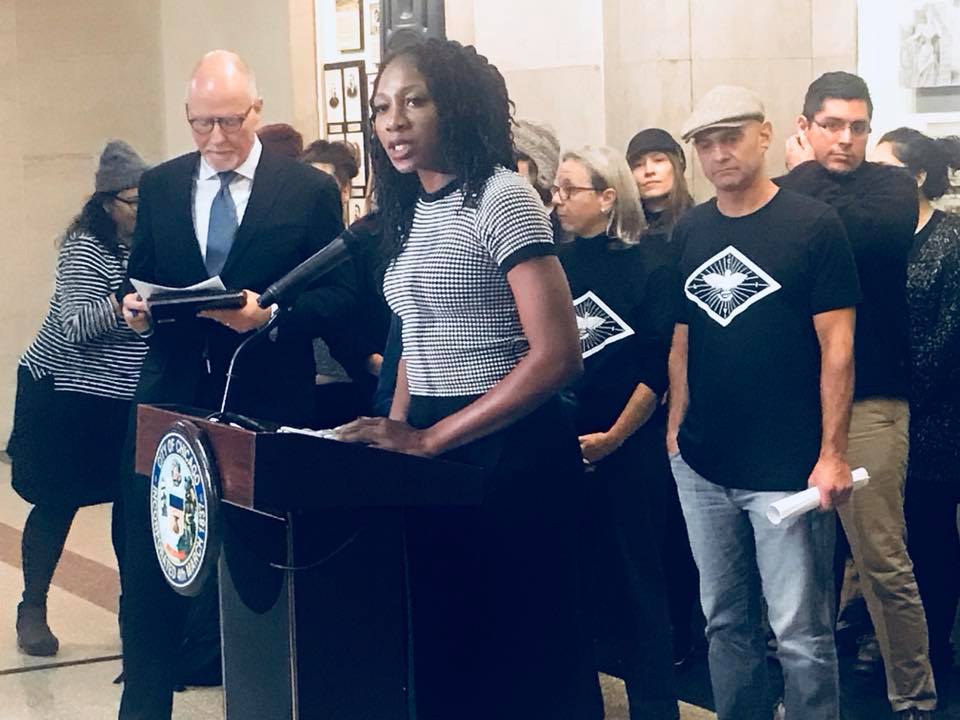
Though it is not as urgent an issue as quality of life, Enyia acknowledges that the Lincoln Yards example is also pertinent to the Chicago art community, as the Live Nation Venue being developed from TIF funding will likely result in disinvestment from local DIY spaces. Enyia draws a comparison to a big box retailer moving into a neighborhood and shutting down local businesses.
“This is their universe, and the Live Nation piece directly threatens that entire ecosystem,” said Enyia about the opportunity and support provided by Chicago DIY art and performance spaces.
Enyia aims to remedy the misuse of tax revenue and prejudiced public investment to provide historically underserved Chicago areas with the means for sustainability that they so greatly deserve.
“It feels like the message that we had the first time was the right message, but we were right on time but early. I feel that this time the world has actually caught up to the things that we were saying about moving away from the status quo, about a vision for Chicago,” said Enyia.
Find your local Amara Power Hub here, donate here, and listen to our interview from back in December here.







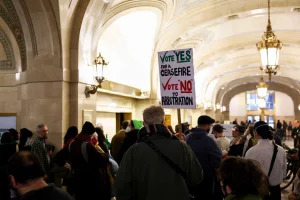



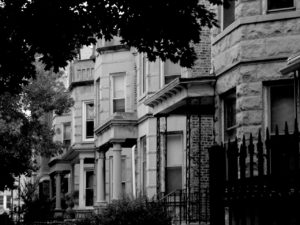
Be First to Comment